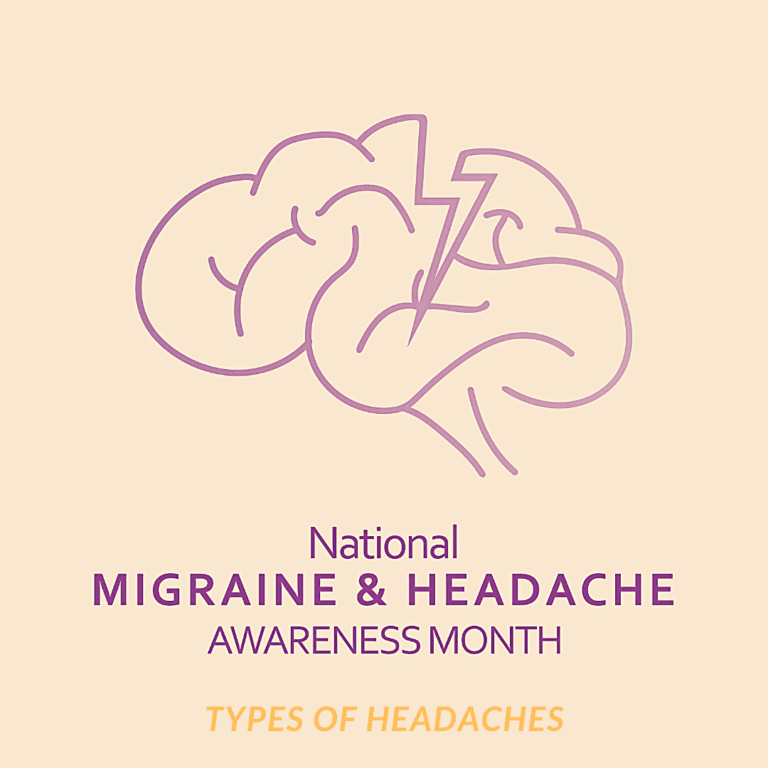June is National Migraine & Headache Awareness Month (MHAM) where the headache, migraine, and cluster communities work together to raise public awareness, address stigmas, and build a stronger community of headache, migraine, and cluster advocates. The World Health Organization notes that headache disorders are the most common nervous system disorder that has been underestimated, under-recognized, and under-treated throughout the world. Headache disorders are characterized by recurring headaches, but can be differentiated by their symptoms. According to a blog on the MHAM website, there are different types of headaches, including:
Primary (Benign) Headaches
A primary headache is one that occurs independently of other factors. Basically, primary headaches do not have a cause. Primary headaches are also sometimes known as benign headaches because they do not cause harm to the body (besides the pain). Some common types of primary headaches include:
Migraine
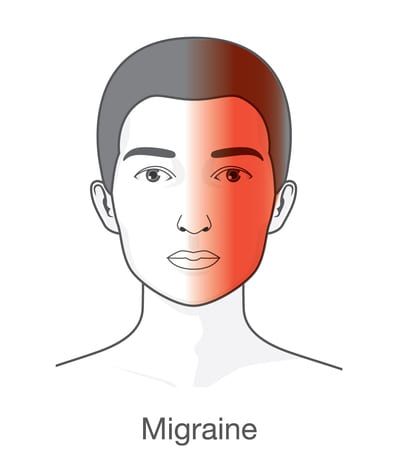
Migraines are moderate to severe headaches that generally cause throbbing pain on one side of the head and are accompanied by other symptoms such as nausea, vomiting, pain behind the eyes or ears, seeing spots of flashing lights, sensitivity to light and sound, or temporary vision loss. They can be episodic, meaning they occasionally occur, or chronic, meaning that they occur more than 15 days a month. Migraines are classified as having an aura or not having an aura. Aura is the term used to describe sensations that are experienced before a migraine develops. These sensations generally begin 10-30 minutes before the migraine and can include trouble concentrating, feeling tingling or numbness in the face or hands, seeing flashes of light, or having an unusual sense of taste, smell, or touch.
Chronic Daily Headaches
Chronic daily headaches are those that last four hours or longer and occur more than 15 days a month. In some cases, they are also known as medicine overuse headaches since they are often seen in those who consume large amounts of caffeine.
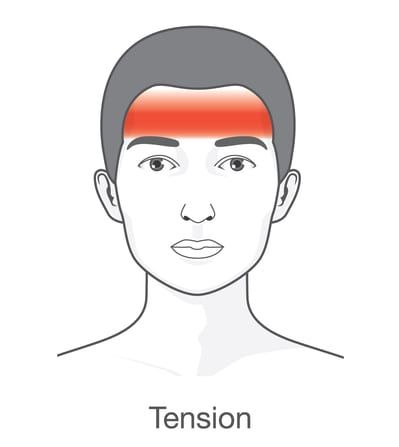
Tension Headaches
Tension headaches are characterized by feeling like a tight band is wrapped around the head or a heavy weight is on top of the head. This type of headache is also sometimes accompanied by neck and shoulder pain. In some cases, tension headaches can lead to migraine headaches.
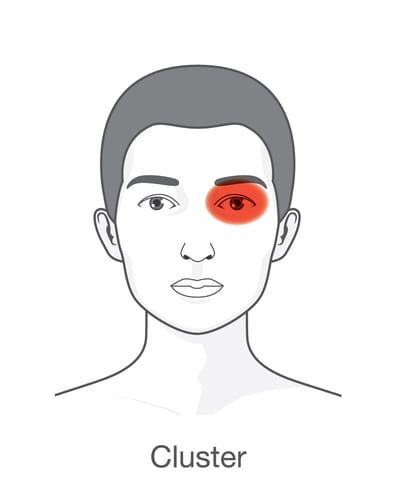
Cluster Headaches
Cluster headaches are characterized by an extreme one-sided headache that centers around the eye or temple and recurs at a similar time each day. Most cluster headaches reach full intensity within 5-10 minutes, last for about 30-60 minutes on average, and stop abruptly. Cluster headache episodes tend to last 4-12 weeks and usually occur during a particular season. In cases where more frequent cluster headaches occur with less intensity, then this is known as chronic paroxysmal hemicrania.
Dangerous Headaches
Unlike benign headaches, dangerous headaches can be warning signs of other health problems and require immediate medical attention. Generally speaking, it is recommended to seek medical care if you are experiencing a headache with any of the following symptoms:
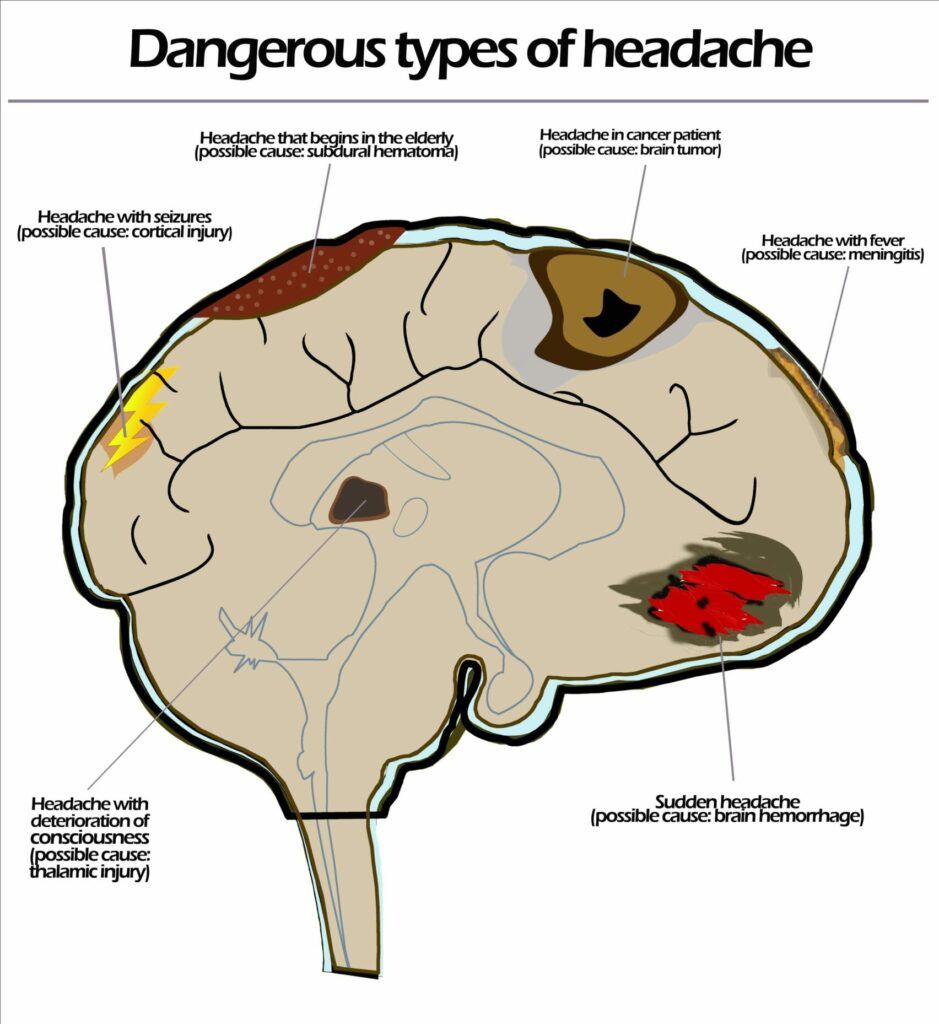
- Confusion
- Loss of vision
- Paralysis in any part of your body
- Rash
- Slurred speech
- Stiff neck
- Temperature of 100.4°F or higher
Thunderclap Headache
A thunderclap headache is characterized by severe headache pain that comes on suddenly within a minute or less and lasts at least five minutes. Thunderclap headaches can be a symptom of subarachnoid hemorrhage and require emergency medical care in these cases. In some cases, they can also be benign.
Temporal Arteritis/Giant Cell Arteritis
Temporal arteritis, also known as giant cell arteritis, is an autoimmune disease affecting the temporal arteries. It causes the temporal arteries to become inflamed, which leads to scalp sensitivity or pain, pain and/or bulging arteries around the temples, and possible jaw pain while chewing. Temporal arteritis requires emergency medical care to prevent blocked blood flow and the loss of vision.
Potentially Dangerous Headaches

High Altitude Headache
Also known as mountain sickness, high altitude headaches are moderate to severe headaches that occur when ascending 1600 feet or higher in a day. These headaches are also accompanied by at least one of the following: anorexia, dizziness, fatigue, nausea, or sleep problems. Most cases are not serious and can be resolved with fluids or decreasing altitude. However, cases with incapacitating fatigue, chest tightness, shortness of breath, or dry cough can indicate either High Altitude Pulmonary Edema or High Altitude Cerebral Edema, which require immediate medical attention.
Hemiplegic Migraine
Hemiplegic migraines cause symptoms similar to a stroke, however they take several seconds or minutes to develop and do not come on suddenly like during a stroke. These symptoms include: temporary weakness on one side of the body, numbness or tingling in the arms and legs, problems with speech and vision, and overall confusion. The accompanying headache can occur before or after the onset of symptoms.

Dr. Kashouty, a diplomate of the American Board of Psychiatry and Neurology (ABPN), practices general neurology with fellowship trained specialization in clinical neurophysiology. Dr. Kashouty finds the form and function of the nerves and muscles the most interesting part of neurology, which is what led him to specialize in neurophysiology with more emphasis on neuromuscular conditions. He treats all neurological diseases, but his main focus is to treat and manage headaches, movement disorders and neuromuscular diseases.

